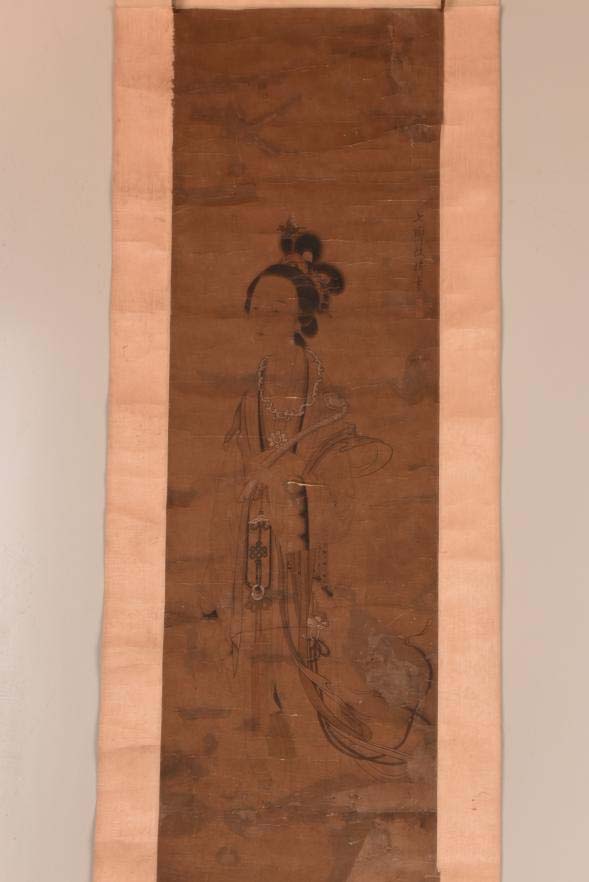Collection
CONTACT US
Tel:
Fax:
Website:www.jshamuseum.com
Add:58-8 Ninghai North Road, Hai'an City, Nantong City

Fax:

Website:www.jshamuseum.com
Add:58-8 Ninghai North Road, Hai'an City, Nantong City
| Gai Qi's Scroll of Ladies |
| Hits:5590 Date:2025-03-07 |
Ladies' paintings belong to the category of traditional Chinese figure paintings, which have continued to exist from the Six Dynasties to the Qing Dynasty. Throughout the dynasties, ladies' paintings have used different female images as carriers, reflecting the social style, aesthetic concepts, cultural connotations, and ideological trends of that time. Starting from the image of chaste and virtuous women in Gu Kaizhi's "Women's History Admonitions", the focus on women in the painting begins to show the rich life atmosphere of women in the Wei and Jin dynasties. From Zhou Fang's "Hairpin Flower Ladies" to the elegant and luxurious appearance of ladies in the Song and Yuan dynasties, landscape painting flourished and declined until the Ming and Qing dynasties. For example, in Tang Yin's "Wang Shu Palace courtesans", the ladies have willow eyes, cherry lips, and sharp chin, laying the foundation for the "pathological beauty" of Qing dynasty ladies' painting. By the Ming Dynasty, the combination of literati painting and humanistic painting was no longer just for the purpose of "educating and helping people's relationships", or simply to reproduce women's daily lives. From the early Tang Yin and Qiu Ying, to the late Ming Chen Hongshou, the depiction of literati changed from the elegant and virtuous aristocratic women of the Wei and Jin dynasties and the elegant and luxurious aristocratic women of the Tang dynasty, and began to depict commoner women in secular novels. The appearance and posture of the ladies fall between the fullness of the Tang Dynasty and the delicacy of the Qing Dynasty, incorporating the aesthetic taste of literati, but also more formulaic. In the Qing Dynasty, the status of literati paintings was extremely high, surpassing mountains, waters, flowers, and birds. Gao Chongrui of the Qing Dynasty once said in his collection "The Collection of Matsushita Qingzhai": "It is a famous mountain and water in the world, with unique flowers and birds, but only beautiful women can have it all." On the basis of inheriting from the Ming Dynasty, the Qing Dynasty had a more vigorous and delicate style, presenting a delicate and delicate "pathological beauty" that was more conceptual and formulaic than previous generations. When it comes to female painters in the Qing Dynasty, Gai Qi (1773-1828) is particularly famous. His courtesy name was changed to Boyun, his literary name was Xiangbai, and he was also known as Qixiang, Yuhushan Ren, Yuhu Waishi, Yuhu Xiansou, etc. He was mainly active during the Qing Dynasty's Jiadao period, when the economy in the Jiangnan region was prosperous and the calligraphy and painting market was flourishing. Under the development of capitalist economy, although Gai Qi did not enter the government, he actively managed and promoted his paintings throughout his life, becoming a well-known professional painter in the Jiangnan region. Gaiqi loves traveling and has extensive social connections, making friends with many famous literati and painters such as Jiang Baoling and Chen Hongshou. His poetry is highly renowned in the Jiangnan region and is a representative figure of the later Zhejiang Western Ci School, which had the most influence in the Qing Dynasty. Gai Qi had a profound foundation in painting, studying Tang Yin, Qiu Ying, and Chen Hongshou, and then innovating and developing his own style of painting, including painting of ladies and flowers and birds. She was particularly famous for her paintings of ladies, but did not break away from the traditional image of ladies in the Qing Dynasty. The superb expression techniques and delicate details in the paintings of Lady Gaiqi made them a masterpiece of Qing Dynasty's Lady paintings. Their Lady paintings were unique and were later known as the "Gai School", along with Fei Danxu (1801-1850), who enjoyed a reputation in the art world and were referred to as "Gai Fei". |
| 【Refresh】【Print】 |
| Last:Blue glazed gold elephant ear vase Next:Enamel colored handle pot |




